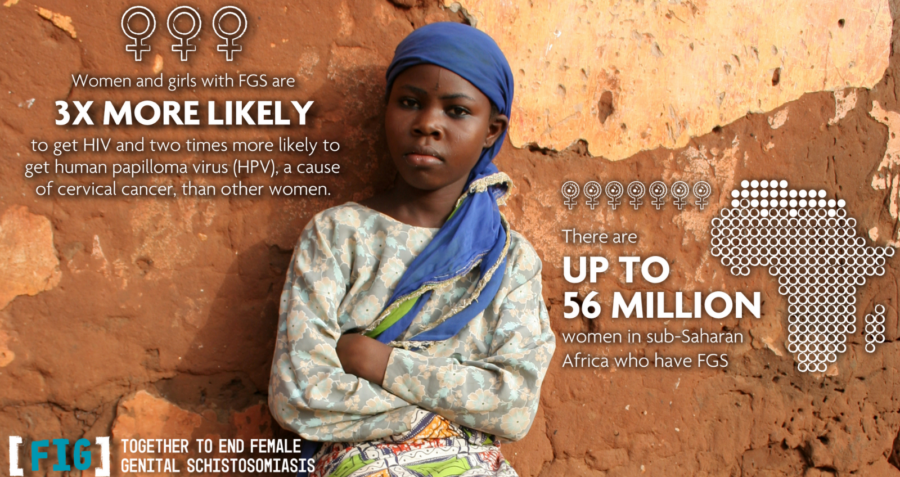Female Genital Schistosomiasis Integration Group

Key information
- Organisation: FGS Integration Group (FIG)
- Country: Botswana, Cote d’Ivoire, Eswatini, Kenya, Lesotho, Malawi, Mozambique, Namibia, Rwanda, South Africa, Uganda, Tanzania, Zambia, Zimbabwe
- Stage of innovation: Stage 2: Proof of concept developed
- Funder: FIG partners
Summary of intervention
Female genital schistosomiasis (FGS), or bilharzia, affects up to 56 million women and girls across Africa. It is caused by parasitic worms in lakes, rivers and ponds where people bathe, wash clothes and collect water. Worms burrow into the skin and can cause inflammation, open sores and bleeding on the cervix and vagina. If untreated, the sores and lesions increase the risk of HIV transmission, and FGS also speeds progression of HIV in women and girls who are not on HIV treatment. There is also risk of cervical cancer and other serious reproductive health issues, including infertility, ectopic pregnancy, miscarriage, stillbirth, and painful intercourse.
FGS is easily treated and preventable, but is often unrecognised and misdiagnosed as a sexually transmitted infection (STI). This means many women and girls with FGS are given the wrong treatment and often suffer stigma associated with STIs. Despite its potentially devastating impact, FGS is largely invisible in HIV and SRHR programming.
FIG was formed to tackle this issue by working across multiple health sectors. An innovative coalition of organisations, it is galvanising joint action across partners working in sexual and reproductive health and rights (SRHR), HIV, HPV/cervical cancer, neglected tropical disease (NTD), and water, sanitation and health (WASH). By integrating FGS into SRHR and NTD programmes at scale, the coalition aims to raise awareness and understanding of the impact FGS has on women and girls — mainly those who are already marginalised and lack access to safe, clean water, good hygiene and sanitation facilities. Training for health professionals is promoting prevention, proper diagnosis and treatment, as well as increasing awareness and providing access to comprehensive, good-quality information to reduce stigma and discrimination.
FIG is increasing the visibility of FGS across the HIV, SRHR and NTD sectors and influencing policy and decision-makers, as well as promoting knowledge exchange and learning among ministries of health and implementing partners. Discussions are already in progress with WHO and UNAIDS regarding an inter-agency task force to provide a framework and targets to scale up efforts to integrate and prevent FGS.
learnings
For FIG members, partnering with health sectors they do not typically work with has proved effective, increasing the diversity of ideas and solutions. FGS and the connection with HIV are widely researched and understood within the NTD community, however, It is not visible in the HIV or reproductive health communities — even among obstetricians and gynaecologists. Although scale-up is dependent on integration into HIV/SRHR services, funding for research and operationalisation of integration pilots is siloed within the NTD community.
FIG is continuing to run awareness-raising activities at key events and to maintain advocacy and influencing activities. Next steps will include integrating FGS into routine SRHR and HIV services, for example, checking for FGS when screening for cervical cancer. There are also plans to integrate FGS into Frontline AIDS and partner programmes and advocate for Global Fund, PEPFAR and country grant processes to focus on this issue. FIG will continue to work with WHO (NTD and HIV teams) and UNAIDS to develop a global framework, targets and programme guidance for FGS integration.
next steps
To take the innovation to the next stage of development requires a continued commitment to staff coordination of the partnership. It also will rely on increased awareness among key individuals in donor agencies and national ministries of health, donor engagement and support.
sustainability
For efforts to be sustainable, FGS and cervical cancer screening must be routinely included as part of HIV and SRHR services
Read more information on FIG.

